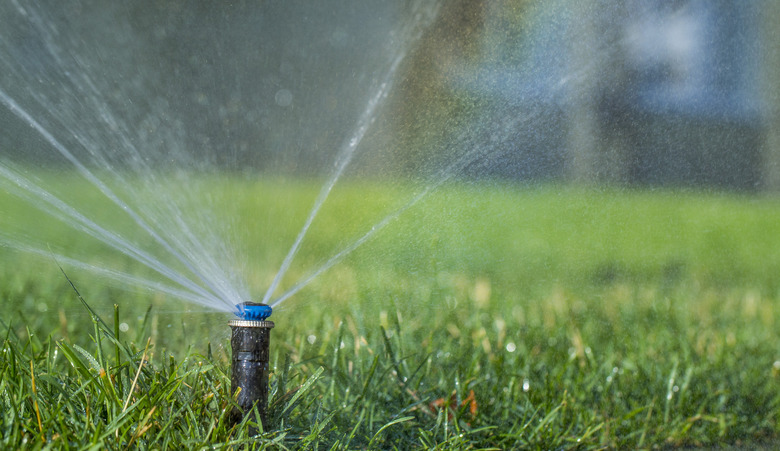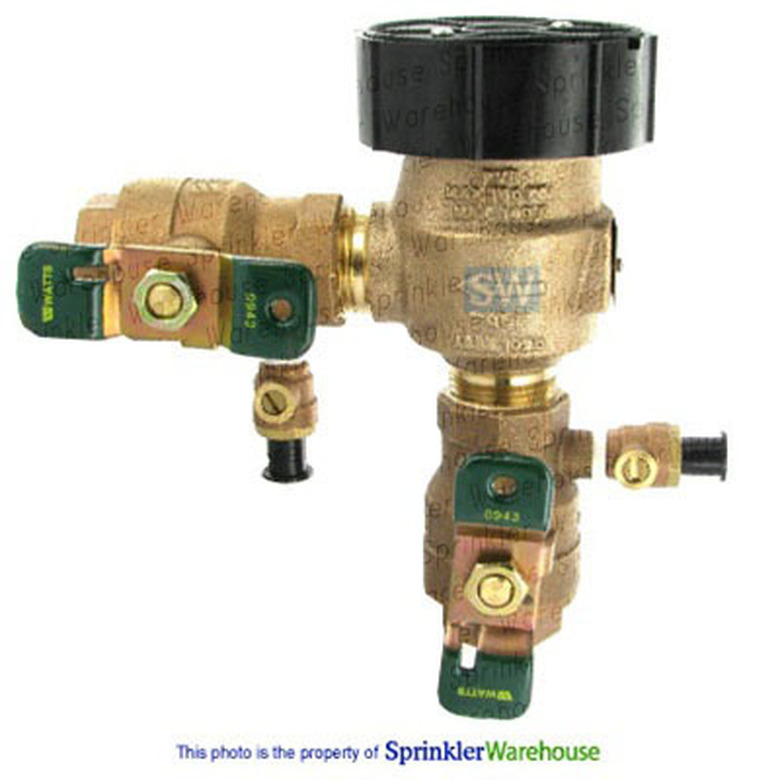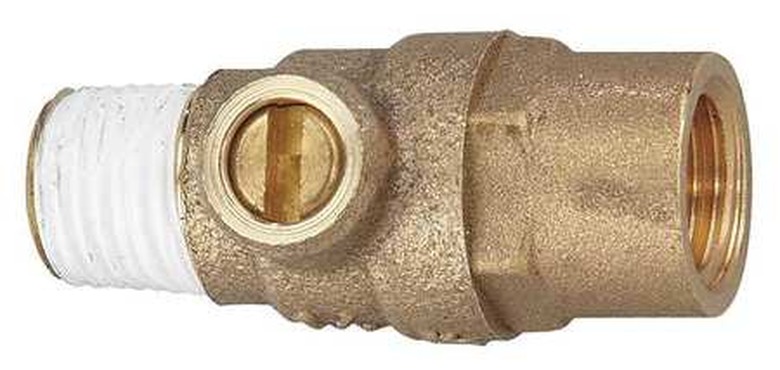How To Winterize A Sprinkler System
If you have a lawn sprinkler system and you live in a climate that drops to 32 degrees F. or lower in winter, you have to blow water out of the system before the cold sets in. If you don't, almost any part of the system can freeze—bursting pipes, cracking sprinkler heads, breaking valves or damage to the most expensive part of all—the backflow preventer, the big brass-and-copper contraption with all the little valve handles. The goal of a sprinkler blowout is to get the water out of (as much as possible) every sprinkler zone and the backflow plumbing. When you're done with the blowout, you'll open the backflow valves a bit so that any residual water can freeze without building up pressure and causing damage.
Can You Do It Yourself?
Can You Do It Yourself?
Hiring a sprinkler pro to winterize your system each year may cost about $60 to $120 or more, but you can do it yourself if you have a decent-size air compressor. You'll use the same process as the pros—it'll just take you longer because you'll have to refill your compressor and blow out each zone a few times. Pros use industrial-size air compressors that run continuously and can deliver a huge volume of air; they don't have to stop and refill the tank as you will. It's the volume, not the pressure, that makes the difference. A standard shop-size compressor can deliver more than enough pressure to blow out a sprinkler system. In fact, be very careful not to use too much pressure, which can damage the sprinkler parts. The maximum air pressure to use is 80 psi (pounds-per-square-inch) and you really don't need that much.
Another thing to keep in mind is that sprinkler systems are anything but universal. Many systems have the backflow preventer outside, but some have them in the ground and some are indoors. And backflow preventers and other plumbing can have very different configurations and different numbers and types of valves. So it makes sense to familiarize yourself with the key system parts, including the backflow preventer, the water shutoff and any bleed valves or nipples used to drain water from the backflow. The system's shutoff valve is usually in a basement or crawl space where the water on the supply side of the valve won't freeze.
Things Needed
-
Bucket
-
Flathead screwdriver
-
Air compressor
-
Air hose and fittings (as needed)
How to Blow Out a Sprinkler System
1. Shut Off the Water
Turn off the water supply to the sprinkler system at its shutoff valve. Most shutoffs are ball valves that have a lever-type handle—turn this 1/4 turn so the handle is perpendicular to the water pipe. With ball valves, a handle parallel to the valve body is all the way on; perpendicular is all the way off. If there is a bleeder nipple or valve near the shutoff—on the sprinkler side of the valve (not the supply side)—place a bucket under the nipple or valve, then remove the cap on the nipple or open the valve. A small amount of water may come out. A little more will come out later, so leave the bucket in place until the last step.
2. Bleed the Backflow Plumbing
Open all of the valves on or near the backflow preventer. There should be one conventional ball valve (or another type of valve) at each side of the backflow as well as two or more test cock valves. The test cocks look like the head of a slotted screw. They're actually ball valves that you operate with a flathead screwdriver. They're open when the slot is parallel to the piping (or water flow direction); they're closed when the slot is perpendicular to the piping. Opening these valves will allow water in the backflow plumbing to drain out through the bleeder nipple or valve near the system shutoff valve (where you left a bucket at the ready).
3. Connect the Air Hose
Close the valve and test cock on the supply side (not the sprinkler side) of the backflow preventer. Connect the air compressor hose to the blowout port near the backflow preventer. Your system may have a dedicated connection for this, or you may have to install a quick-connect fitting to a port on the sprinkler-side piping. The important thing is that the air blows out into the sprinkler system and not backward through the backflow preventer. Blowing pressurized air through the backflow can damage it. If your system has a shutoff valve that isolates the backflow from the air port, close this valve.
4. Turn On the First Zone
Set the sprinkler system controller to run the zones manually. Select the first zone in the system, and add several minutes to the time clock. Start the clock to open the zone valve. If you control your sprinkler zones manually, rather than with a controller, open the first zone as usual.
Warning
The zone must be open/running before you blow out the zone.
5. Blow Out the First Zone
Adjust the output pressure on your compressor to no more than 80 psi. Turn on the compressor to deliver air through the hose and into the first zone of sprinkler piping and heads. Initially, the sprinkler heads will eject only water, then they will start to spit and sputter as the water runs out of the lines. Finally, the heads will emit a mist, or "fog," indicating the zone is sufficiently blown out. Depending on the size of your compressor, you may need to stop and refill the compressor tank, then continue blowing out the zone until the heads begin to fog.
6. Blow Out the Remaining Zones
Turn off the compressor to stop the airflow through the hose. Set the sprinkler controller to begin running the next zone, then restart the compressor. Blow out the second zone as with the first. Repeat the same process until all of the zones are blown out. Since you're using a shop-size compressor, you may have to repeat the entire blowout one or more times until all zones do nothing more than emit fog. (At least next year you'll know how many rounds it takes.) Remember to open each zone before turning on the air pressure. Turn off the compressor when you're done.
7. Complete the Job
Turn off the sprinkler system at the controller. Remove the air hose and any added fittings from the backflow plumbing and replace any port caps, as applicable. Open all of the ball valves and the test cocks on the backflow plumbing halfway by turning the valve handle or cock slot 45 degrees to the piping (water flow). You will leave the valves in this position all winter. It allows air to escape the piping if there is any water inside that freezes (air pressure contributes to burst pipes). Finally, replace the bleed cap or close the bleed valve near the water shutoff to the system.
Now you're ready for winter! (At least you won't have to mow.)


